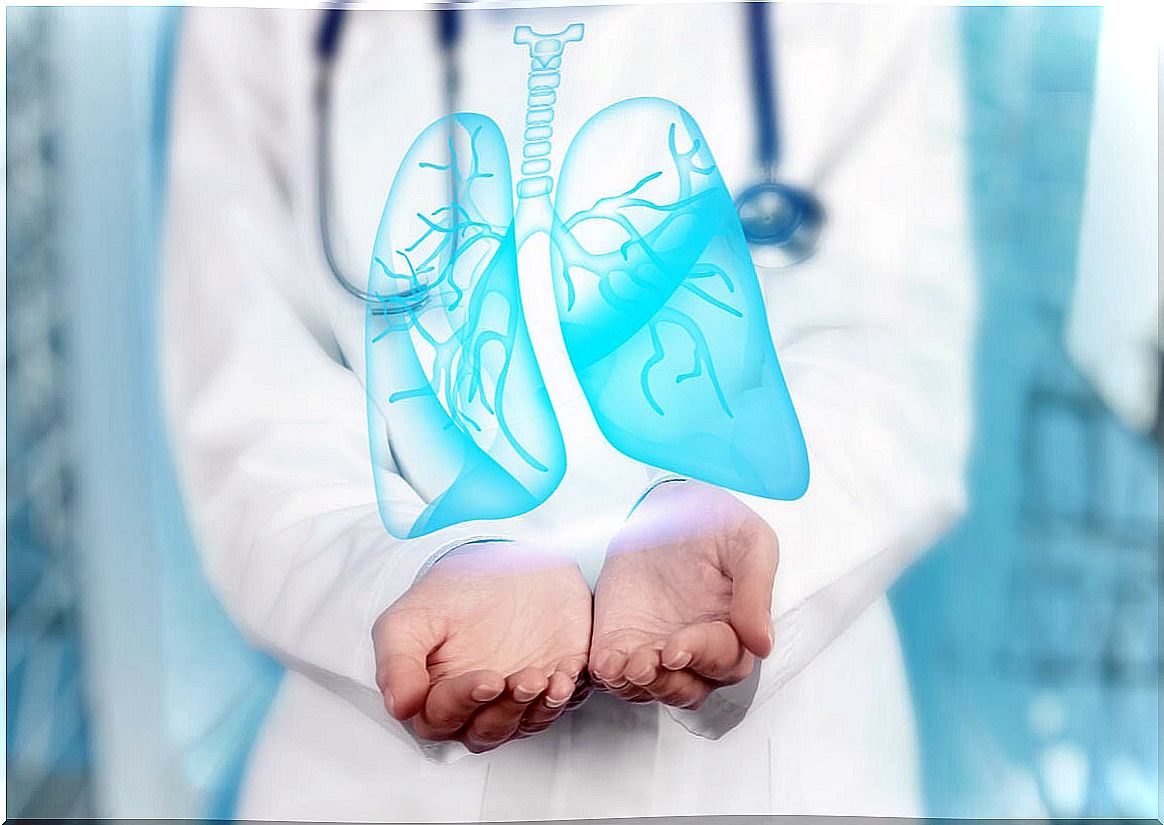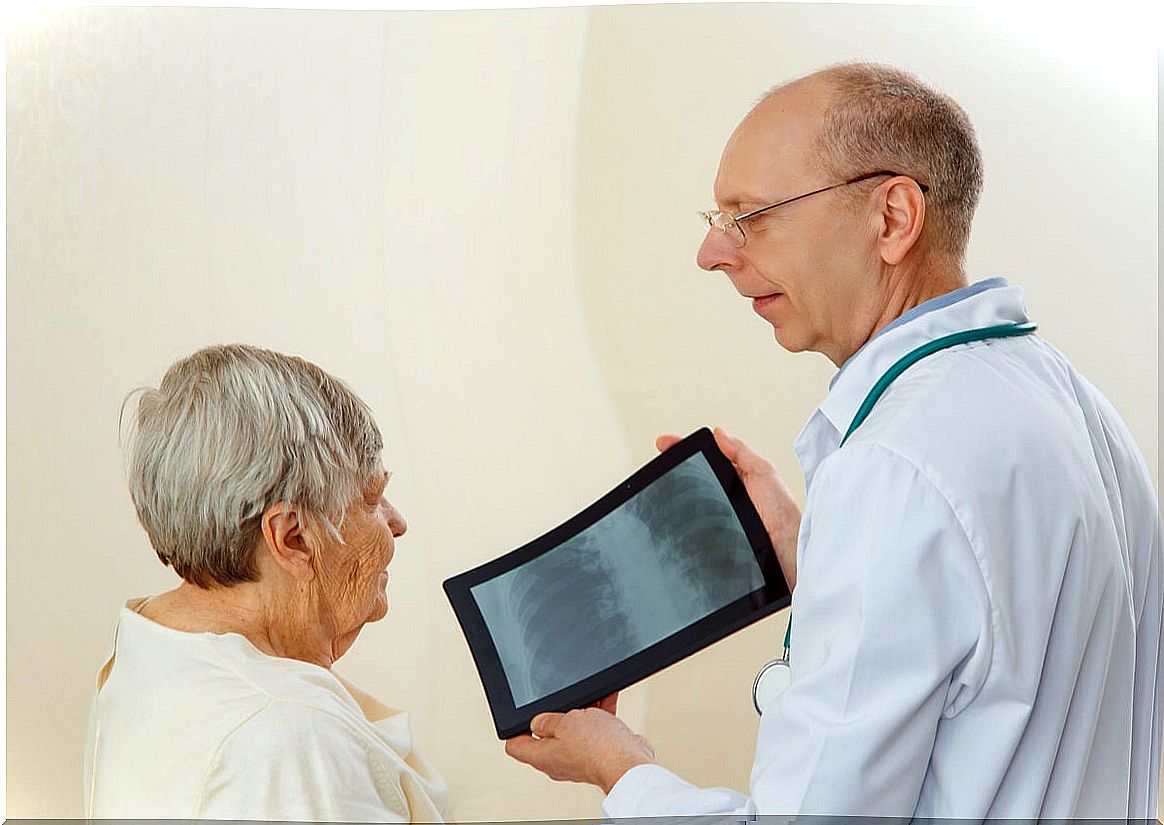What Is Bronchoscopy And What Is It For?
Bronchoscopy is a diagnostic test that has been used since the late 19th century. It allows the airway to be seen to the larger bronchi. In addition, it can even be used to treat certain pathologies.
This technique has advanced remarkably over time. Before it was made with a rigid steel tube. However, an elongated, flexible device is now used that is easier to handle.
Bronchoscopy is one of the fundamental pillars in pulmonology and is used very frequently. Therefore, in this article we explain everything you need to know about the technique and how it is done.
What is a bronchoscopy?
Bronchoscopy, as we have pointed out in the introduction, is a procedure that allows visualizing the airway. It is done to diagnose or treat some respiratory diseases.
For this, the bronchoscope is used. It is a tube of about 60 centimeters that is inserted through the nostrils or the mouth. This tube consists of a kind of camera at the tip that allows the interior of the airway to be viewed simultaneously on a screen.
In addition to a camera, the bronchoscope allows other elements to be introduced into the area. For example, tools to obtain tissue samples or to remove a foreign body from the line. Currently, the most widely used bronchoscope is the flexible one.
It allows reaching certain more inaccessible parts of the bronchi and having room for movement. However, the rigid bronchoscope is also still used. Especially in cases of bleeding or when there is a large foreign body in the airway.
What are the indications for bronchoscopy?

Bronchoscopy is a frequently used technique to diagnose possible lung disease. This is why it is usually done in people who have respiratory symptoms, such as a cough, difficulty breathing, or signs of infection.
In general, it is used when other diagnostic tests have failed to find the cause of the underlying pathology. In addition, it is important to emphasize that it is also a therapeutic tool. Thus, its main indications are the following:
- Remove foreign bodies from the airway that obstruct it.
- Obtain samples of lung or bronchial tissue: This is used to identify the cause of an infection or make a histological diagnosis.
- Cancer diagnosis: in fact, according to a study published in the Cuban Journal of Military Medicine, the best performance of bronchoscopy is when there is an oncological suspicion.
- Stop bleeding: using laser or electrocautery techniques.
- Expand airways: that could be narrowed.
How it is performed?
Bronchoscopy is a technique that is unpleasant for the patient. The procedure itself usually takes between half an hour and an hour. However, it requires preparation and a later recovery time, which is why it is often lengthy.
To avoid complications, bronchoscopy is sometimes done under general anesthesia. Especially when using the rigid bronchoscope, as it is more annoying. In other cases, only tranquilizers are administered to calm and relax muscles.
Typically, the patient sits or lies on a stretcher. To be able to do the bronchoscopy, the heart rate and oxygen level must be controlled at all times. The bronchoscope can be inserted through the nose or through the mouth. It should be done slowly and avoiding sudden movements.
In some cases, another tube is inserted through which a saline solution is administered. By doing this, the mucus present in the airways is eliminated and better tissue samples can be obtained. Sometimes, as we pointed out before, dilator devices called stents are also inserted .
Once the objective of the procedure is specified, the bronchoscope must be removed. To do this, the doctor gently pulls the tube, pulling it out little by little.
Recommendations before a bronchoscopy
Although it is true that it can be done urgently, in many cases they are also carried out in a planned way. In these cases it is important to take into account all the recommendations made by the professional.
As it is an intervention with risk of bleeding, it is usually necessary to avoid any anticoagulant medication days before the procedure. The ideal is to go with comfortable clothes and be accompanied.
Although general anesthesia is not required in all cases, medications used to calm the patient can leave the patient drowsy or dazed. That is why it is recommended that someone be able to follow up after the intervention.
During the procedure
Since general anesthesia is not required in most cases, the person who undergoes this technique is usually awake and can help. Therefore, the doctor is able to ask questions about discomfort that may appear.
After the procedure
After bronchoscopy, it is important to allow a period of time for rest and monitoring. In the hours that follow, complications such as bleeding may appear. That is why it is essential that the patient remain under observation for at least a couple of hours.
In addition, during that period of time the effect of anesthetic drugs wears off. It is normal that, at that moment, you begin to feel discomfort and numbness. It is also not recommended to eat or drink anything in the hours after the bronchoscopy.
Most people experience some sore throat or cough. However, if you experience shortness of breath, coughing up blood, or a fever, it is essential to see a doctor.

Risks of bronchoscopy
Like any other medical intervention, bronchoscopy has risks. However, complications are rare. In fact, the most common is that they are derived from the anesthesia used for the procedure rather than from the technique itself.
Bronchoscopy is often used in children. This is because it is common for small objects to be swallowed and lodged in the airway. That is why it is important to highlight that, according to a study published in Pediatric Surgery, this technique is considered safe and with great diagnostic profitability at this stage of life.
According to the Mayo Clinic, the possible risks of this intervention are bleeding, lung collapse and fever. Bleeding is usually self-limited and tends to resolve on its own. Lung collapse occurs when the lung is punctured during bronchoscopy and air builds up around it.
Bronchoscopy is an essential technique in pulmonology
Bronchoscopy is a relatively simple procedure that provides great diagnostic and therapeutic advantages. It does not usually cause complications and, in most cases, it is performed without general anesthesia.
It is one of the most important techniques when diagnosing cancer. It is also very useful in pediatrics, since children often ingest small objects that get stuck in the airways. In addition, bronchoscopy allows for more and more therapeutic actions.









